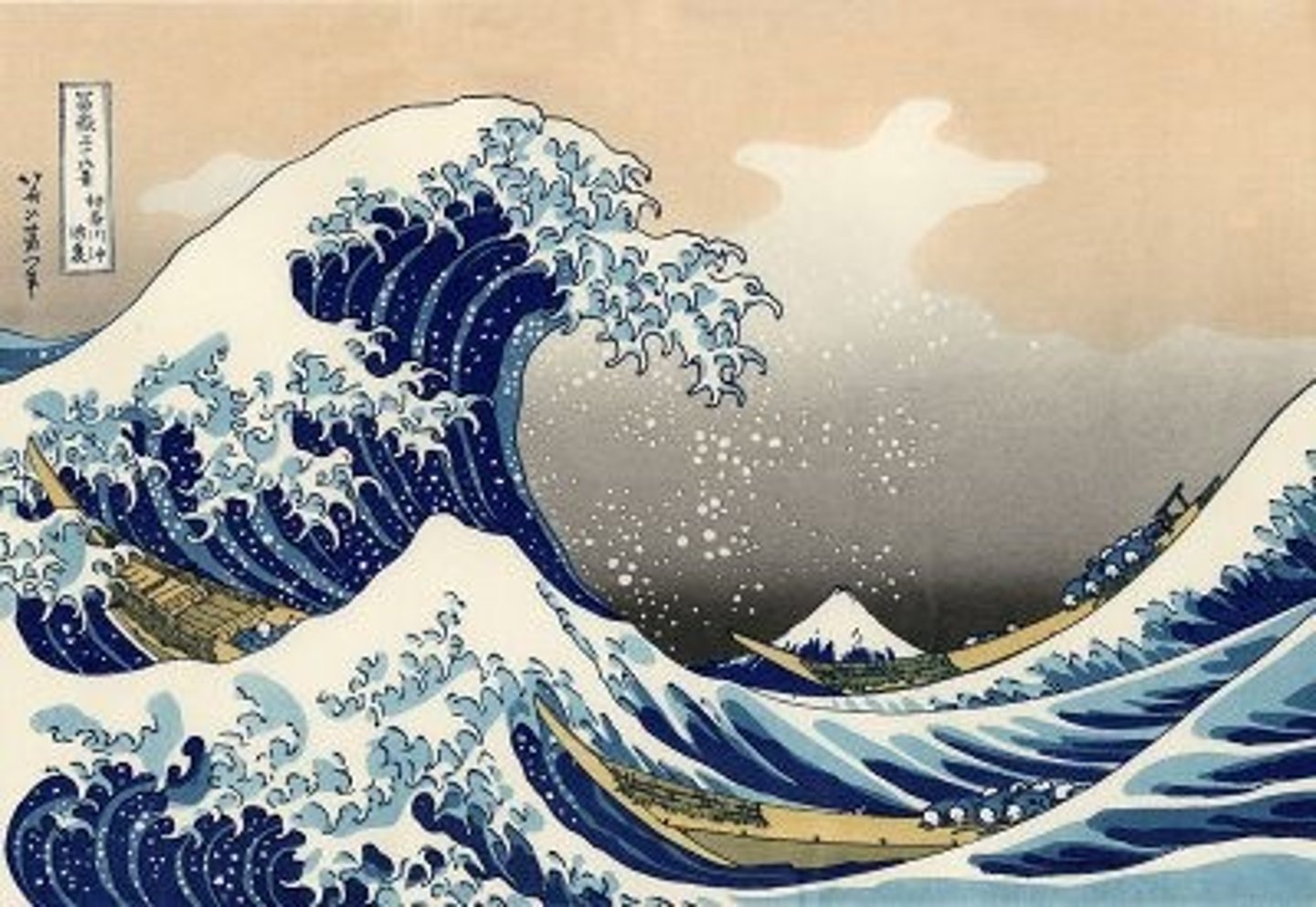Japanese Art
1/7
There's no tags or description
Looks like no tags are added yet.
Name | Mastery | Learn | Test | Matching | Spaced |
|---|
No study sessions yet.
8 Terms
- Great Eastern Temple, refers to its location on eastern edge of Nara, Japan
- noted for colossal sculpture of seated image of Vairocana Buddha
- temple and BUddha has been razed several times during military unrest
- seven external bays on facade
- influenced by monumental Chinese sculptures
- largest wooden building in world
Todai-ji

- monumental feat of casting
- emperor Shomu embraced BUddhism and erected sculpture as way of stabilizing Japanese population during time of economic crisis
- largest metal statue of Buddha in world
- mudra: right hand means "do not fear"; left hand means "welcome"
Great Buddha

- one on either side of gate
- complex joined woodblock construction
- intricate swirling drapery
- fierce forbidding looks and gestures
- masculine, frightening figures, which protect the Buddha
Nio Guardian Figures
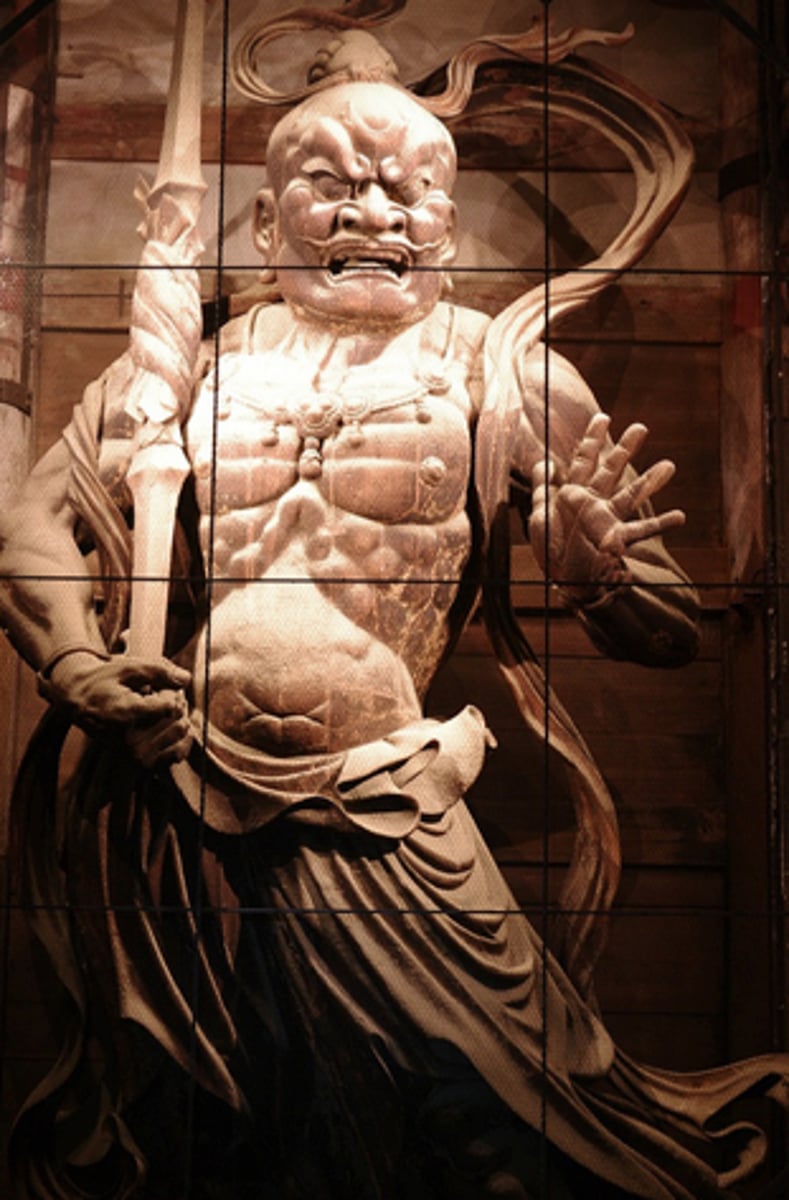
- nandaimon: great south gate, w/ five bays --> three central bays for passing, two outer closed
- two stories same size; unusual in Japanese architecture (usually upper floor smaller)
- deep eaves supported by six-stepped bracket complex, which rise in tiers w/ no bracketed arms
- roof supported by huge pillars
- unusual in that has no ceiling; roof exposed from below
- overall effect of proportion and statlines
Great South Gate
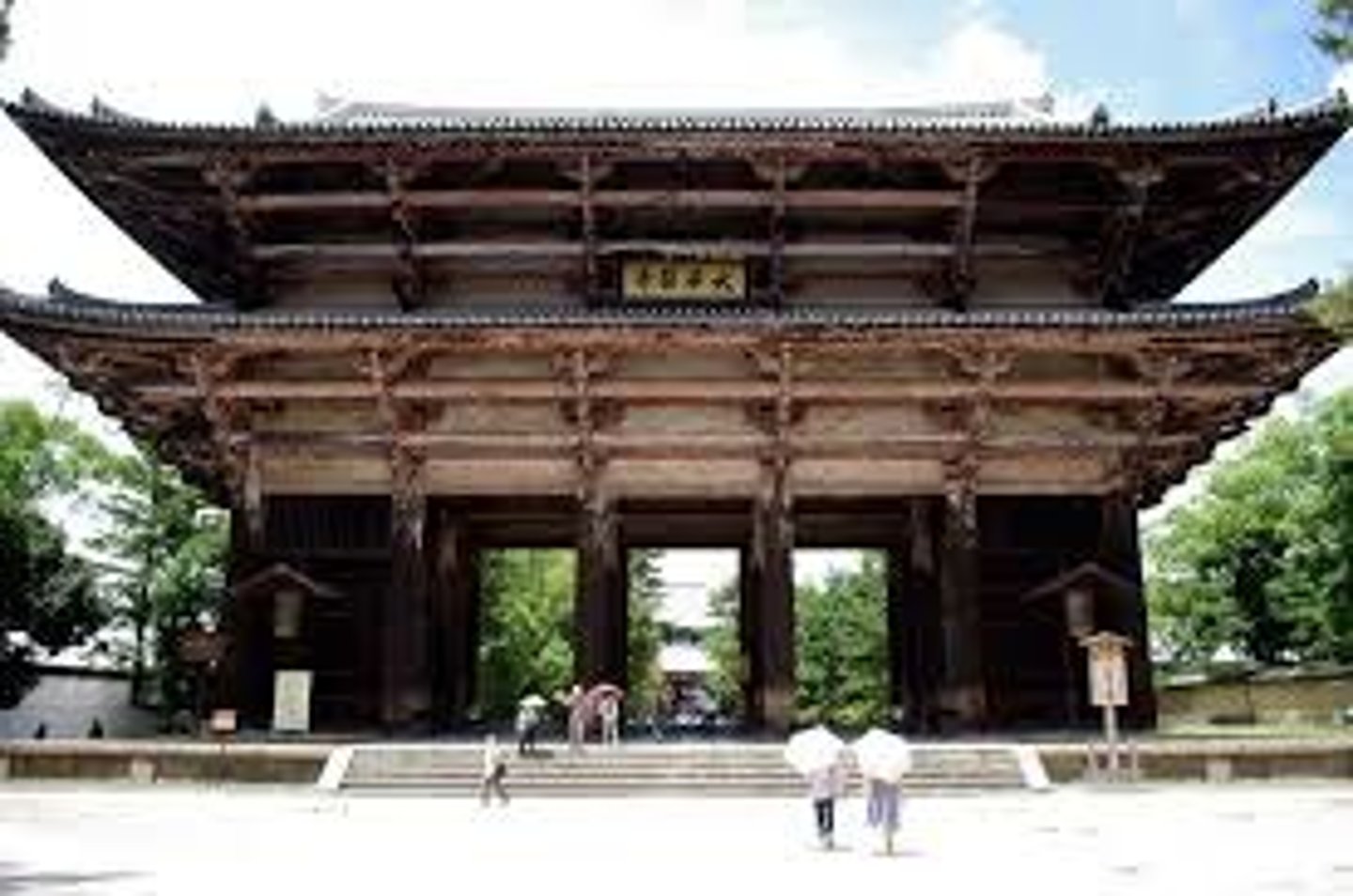
- garden as microcosm of nature
zen dry garden:
- garvel acts as water; gravel raked in wavy patterns
- rocks mountain ranges
- meant to be viewed from veranda in nearby building
- fifteen rocks arranged in three groups
- interpreted as islandins in floating sea; mountain peaks above clouds; constellations in sky
- from no viewpoint is entire garden viewable at once
- focus for meditation
- asymmetrical arrangement
- bounded by two sides by low, yellow wall
wet garden:
- contains tea house
- seemingly arbitrary in placement, plants actually placed in highly organized and structure environment symbolizing natural world
- water symbolizes purification; used in rituals
Ryoan-ji
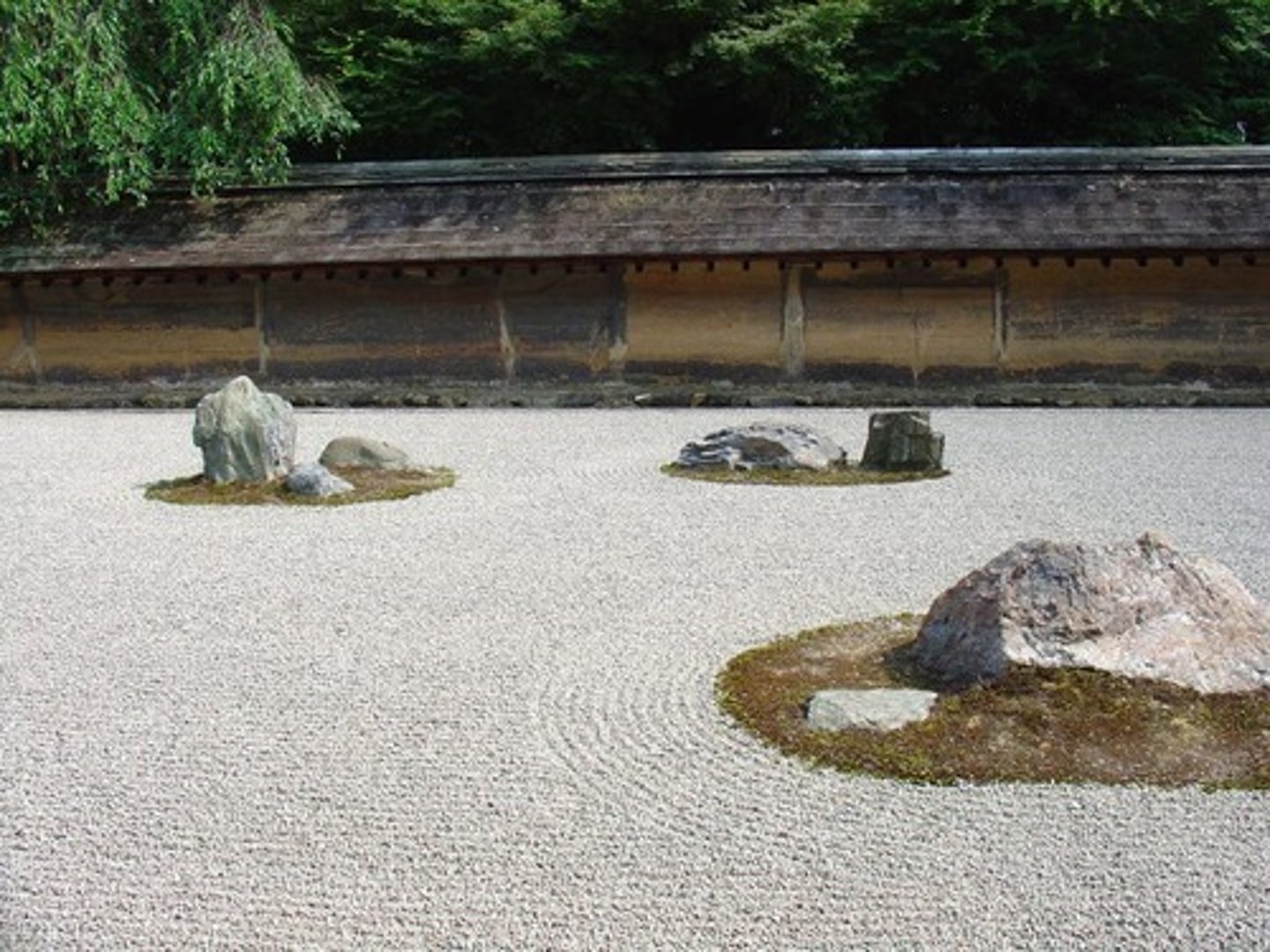
- painted 100 years after civil war depicted in scene
- elevated viewpoint
- strong diagonals emphasizing movement and action
- swift active brushstrokes
- narratives read right to left as scroll is unrolled
- depersonalized figures, many w/ only one stroke for eyes, ears, mouth
- tangled mess of forms accentuated by Japanese armor
- lone archer leads escape from burning place w/ equestrian Japanese commander behind
- military rule in Japan from 1185 on had an interest in code of warrior; reflected in large quantity of war-related literature and paintings
- unrolls like film sequenced; as one unrolls, time advances
- burning at imperial palace of Sanjo in Kyoto as rebel forces try to seize power by capturing emperor
- coup staged in 1159 as Emperor Go-Shirakawa taken prisoner
- imperial palace in flames; rebels force emperor to board a can waiting to take him into captivity
- rebels kill those opposed and place their heads on sticks and parade them as trophies
Night Attack on the Sanjo Palace
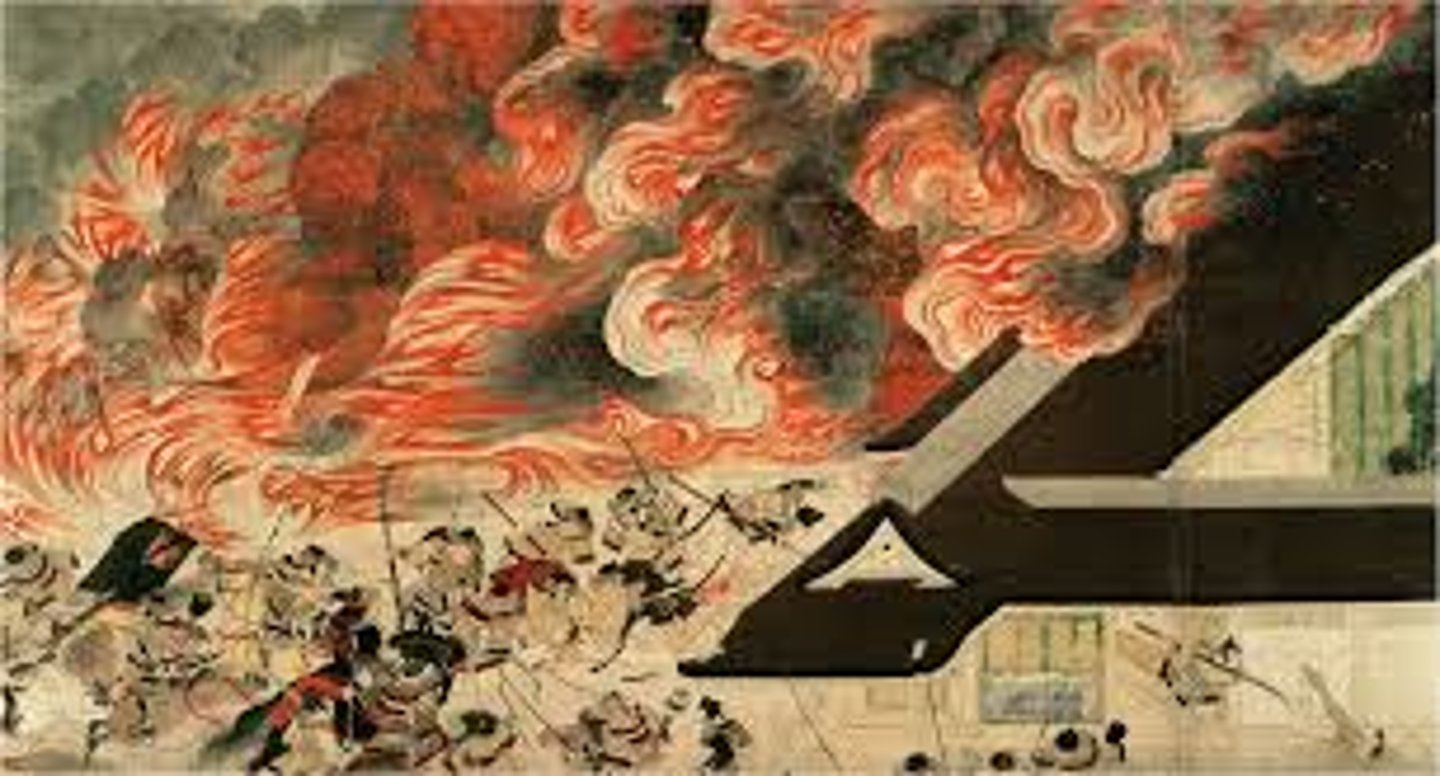
- Japanese rinpa style named for Ogata (Rin for "Ko-rin" and pa meaning "school")
- influenced by yamato-e style of painting
- stream cuts rhythmically through scene; swirls in paint surface indicate water currents
- white plum blossoms on left; red on right
- tarashikomi technique
White and Red Plum Blossoms
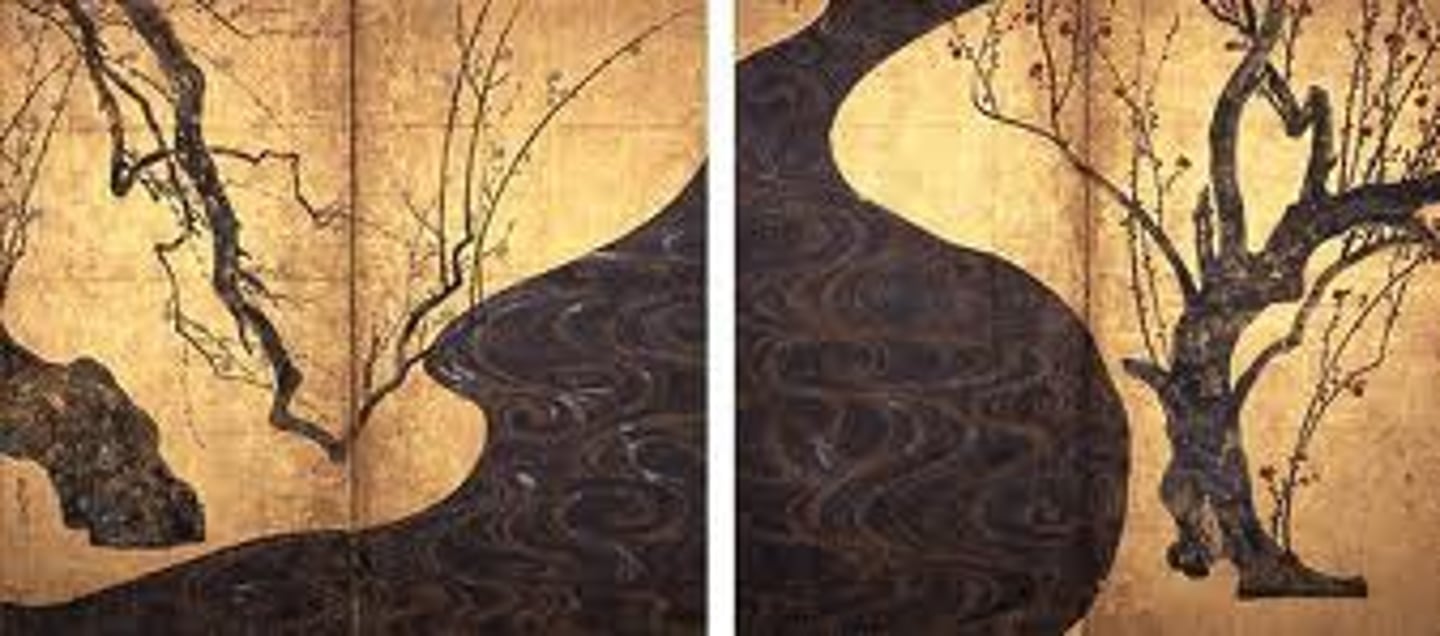
- first time landscape major theme in Japanese prints
- last of a series of prints called Thirty-Six Views of Mount Fuji
- personification of nature, seems intent on drowning figures in boats
- Mount Fuji, sacred mountain to Japanese, seems to be one of the waves
- striking design contrasts water and sky w/ large areas of negative space
Under the Wave off Kanagawa (Kanagawai oki nami ura), also known as the Great Wave, from the series Thirty-six Views of Mount Fuji
